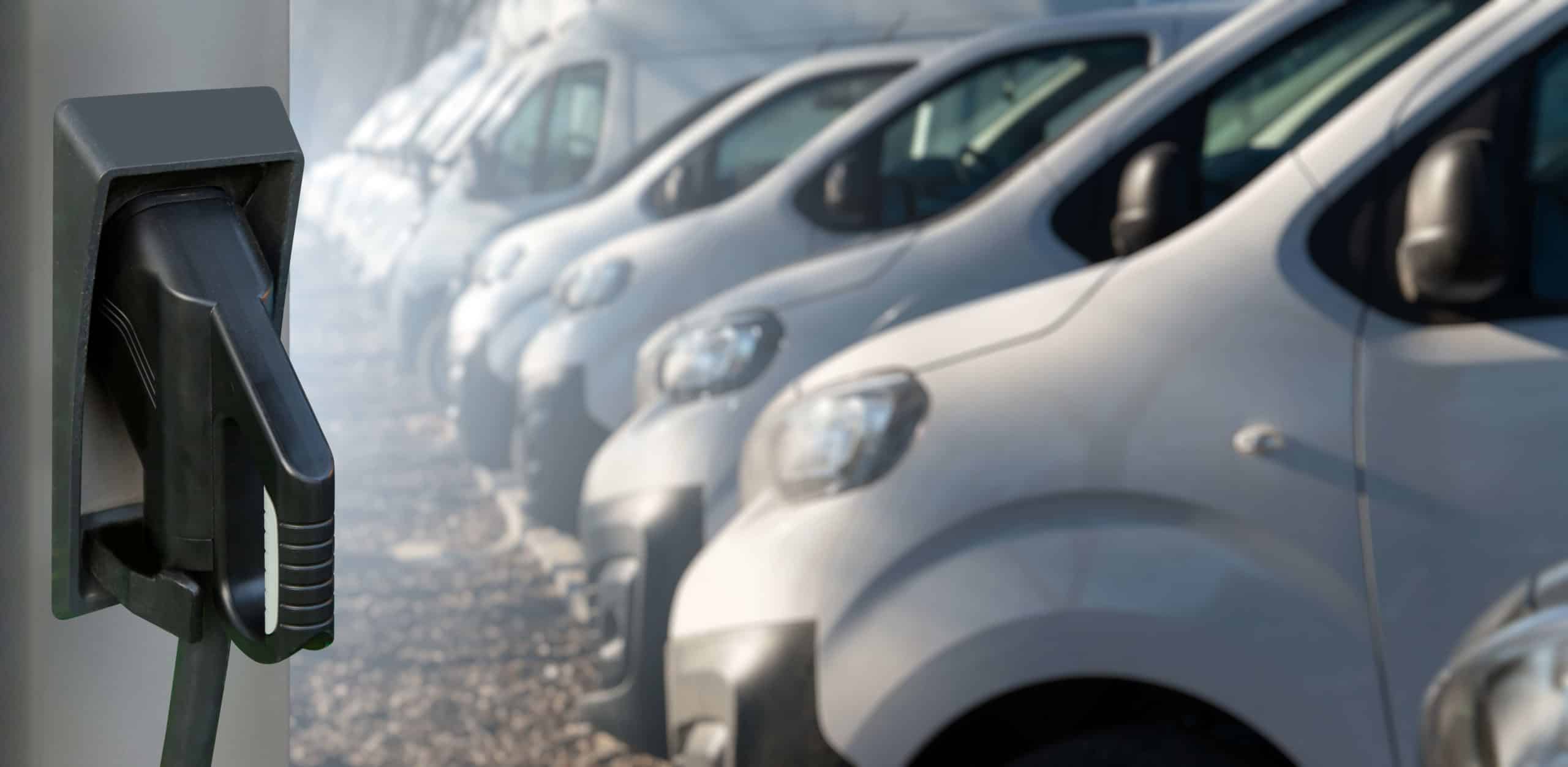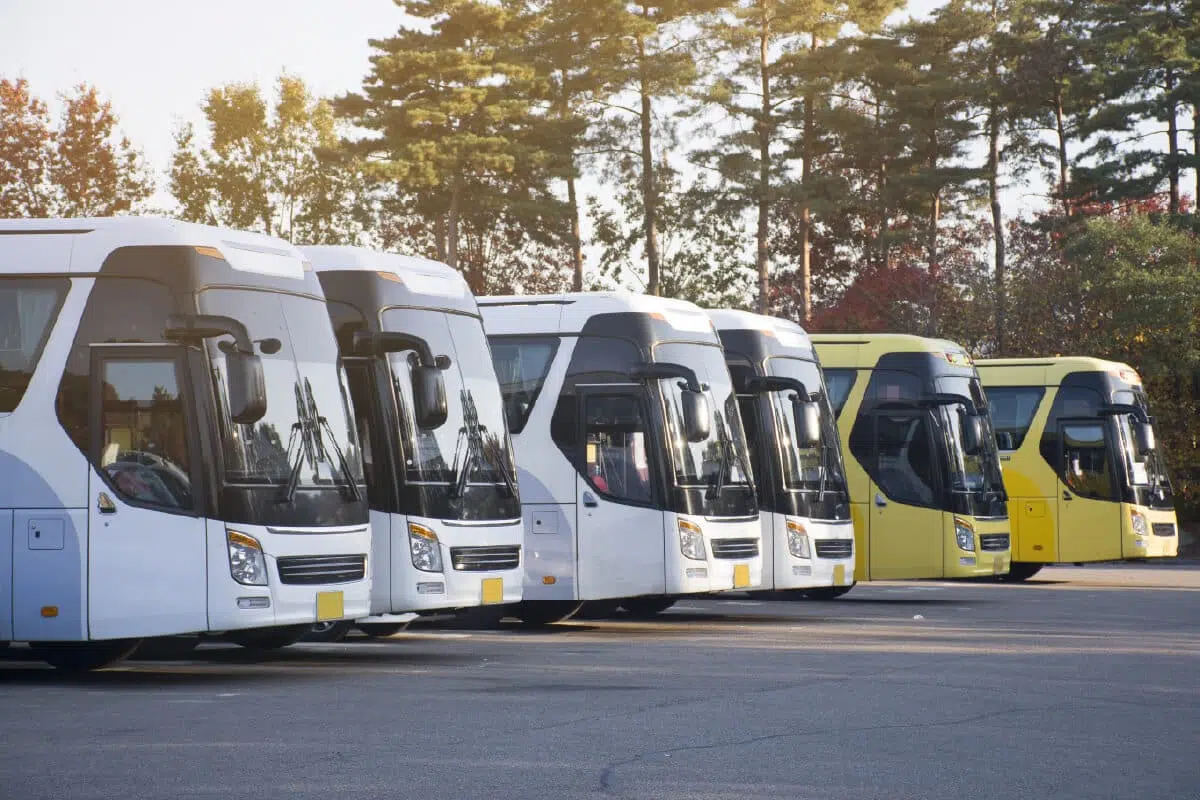- March 23, 2021
- Perspectives, Trending Topics
Three Key Takeaways from Global Transmission Report’s Conference on EV Fleet Electrification

Kimley-Horn Electric Vehicle Planning and Design Experts
Fleet electrification in the United States is capturing headlines in every corner of the electric vehicle (EV) market. We’re just back from the Fleet Electrification in the US: Opportunities, Challenges and Solutions conference, which brought together utilities, municipal and commercial fleet operators, electrical vehicle supply equipment (EVSE) providers, regulators, investors, and consultants to discuss ways to smooth the transition to fleet electrification. In case you missed it, here are the top three takeaways our electric vehicle experts gleaned from the conference.
- Fleet operators and utilities need to stay flexible and creative to find solutions that benefit both parties.
The Fleet Operators’ Point of View: When a fleet operator electrifies their fleet, they pose a challenge for utility companies due to the grid demand needed to charge their vehicles. Fleet operators want the ability to charge their fleet to full capacity without disrupting their business operations. Sila Kiliccote, CEO of eIQMobility, interviewed over 250 fleet managers and found that most of them want vehicles with the largest battery range and chargers with the fastest charge times, which she says for most of them is overkill. Kiliccote suggests fleet operators evaluate the demand their fleet would require and match this with vehicles and chargers that can support the demand.
"Most fleet managers want vehicles with the largest battery range and chargers with the fastest charge times. What they don't realize is for most of them, that's overkill."
Sila Kiliccote, elQMobility
The Utilities’ Point of View: Utility companies are fully prepared to support all customers in their transition to electric vehicles, but large-scale upgrades are complex and take time to implement. It is never too early to consult with your local utility if you are considering deploying electric vehicle charging, especially for commercial and transit applications.
Finding Common Ground: This situation creates a stalemate between fleet operators and utilities, however, there are many ways to solve these issues. One solution is diversifying the locations of fleet operators’ chargers across more than one site. Our electric vehicle engineering consultants have found this to be an easy way to reduce the overall impact to the grid, while allowing operators to increase their load demand. No matter the solution, compromise from fleet operators and utilities will be paramount in finding solutions that work for all parties. The sooner fleet operators and utilities can come together, the smoother the process will be.

- Right-sizing your infrastructure is the key to successful fleet electrification.
Right-sizing your infrastructure occurs when you find the equilibrium between the power demand needed to charge your fleet and the available grid demand provided by your local utility company. In an ideal world, fleet operators would have the flexibility to pull as much power as they need when charging their fleet, but as discussed above, that would create catastrophic issues. However, if fleet operators right-size their infrastructure they can effectively reduce their impact on the grid without disrupting business operations.
The Goldilocks Approach: The best way to ensure your infrastructure is right-sized is to conduct a study to determine your current and future charging needs. Your study should provide an infrastructure plan that is not too big, not too small, but just right for supporting current demand and future growth. Installing more infrastructure later, to support a growing fleet, could cost up to five times the amount of the cost to install it initially. Numerous experts at the conference also discussed the importance of incorporating fleet operations into your study. To increase your flexibility and best avoid retrofitting, you should determine your duty cycle, exact vehicle usage and downtime, maximum daily distance vehicles travel, and your projected fleet growth.
- There are business advantages to electrifying your fleet today versus tomorrow.
There is no time like the present. You’ve probably heard the saying, “The best time to plant a tree was 30 years ago. The second-best time is today.” That adage is relevant to fleet electrification. Charlotte Argues of Geotab spoke about the need to start laying the foundation now for electrifying your fleet. The process takes time and will be a large investment, but there are benefits of starting today.
During Argues’ keynote speech, she made a compelling case as to why fleet operators should make the move sooner than later, saying: “Nearly two-thirds of North American fleets would save money by swapping to electric cars today.” It is widely accepted that electricity is the cheapest way to power vehicles, but there are many other cost benefits that EVs provide including eliminating time and money spent on oil changes.
“Nearly two-thirds of North American fleets would save money by swapping to electric cars today.”
Charlotte Argues, Geotab
The investment to electrify your fleet is unlikely to become less expensive anytime soon because the grants and business incentives that exist today that will not exist in the future. The good news is there are creative ways to reduce your investment.
Additionally, a 2019 Nielsen study suggests that this move towards a more sustainable solution promotes greater brand value that can translate into ROI. The study compared goods across three uncorrelated markets and found goods promoting sustainability had better growth rates than those that did not. Although many fleet operators find it difficult to quantify the ROI of fleet electrification, increasing your sustainability efforts can lead to better growth and improved brand loyalty.
Future-Proofing Your Fleet Operation
Fleets are continually moving away from internal combustion vehicles and rapidly embracing EVs and the change is occurring faster than most estimates project. This rapid transformation is a learning process for everyone involved. The best thing a fleet operator can do is work with an experienced partner to guide them through this process. Fleet operators need a sound plan and a sound strategy to properly electrify their fleet and our EV experts can help guide you through this process. Get in touch with us today.
About the Authors

Bryce Christensen, P.E.
With more than 14 years of experience, Bryce is a senior partner on multiple nationwide programs including national EV programs. He has worked on hundreds of EV charging station sites across the county, including parts of one of the first coast-to-coast EV charging routes. Bryce is a strong advocate for sensible EV infrastructure development. His expertise includes EV charging station design, site planning and layout, grading and drainage design, erosion control, stormwater management system design, utility design, utility coordination, permitting, construction observation, pavement assessment and rehabilitation, parking assessments and planning, and site/stormwater inspections. Additionally, his project portfolio includes single and multifamily residential, retail, healthcare, office, and mixed-use commercial developments.

Ryan Gram, P.E.
Ryan has consulted on more than 1,200 EV charging station sites for various phases of development across 24 states. In addition to charging stations, he is currently partnering to upgrade a major metropolitan area in the Southeast by researching the feasibility of advancing the city’s combustion engine vehicle fleet to environmentally friendly electric vehicles, ensuring the city is EV ready. Ryan is also helping one of the largest e-commerce companies in the US prepare their warehouses for their electric fleet rollout as early as this year. He has assisted clients with site selection and due diligence; EV charging station design, including civil, electrical, and structural; EV readiness plans; fleet conversion; utility coordination; permitting; construction phase services; evaluation of new technology and processes; and more.

Tim Parker, P.E.
Tim has more than five years of experience as an electrical engineer specializing in EV charging stations, power distribution, and lighting for private and public clients alike. Working with most major EV charging station suppliers in the U.S., he has managed and assisted with hundreds of Level 2 and DC Fast Charging (DCFC) stations for both existing facilities and new construction, as well as standalone charging facilities. Tim is a specialist in designing electrical infrastructure needed for EV charging stations.

Ross Stevens, P.E., LEED AP
Ross began work with EV charging in 2011, managing the design and permitting of a large number of sites in the mid-Atlantic for EVgo. Since that time, his experience with EV charging design and project management has enabled him to be a leader in Kimley-Horn’s EV growth—winning nationwide programs with Electrify America and other confidential EV clients.
